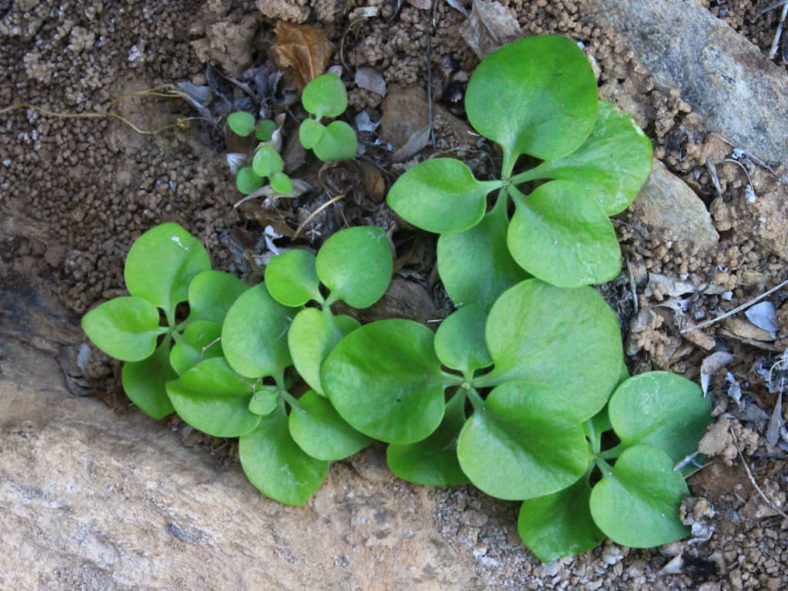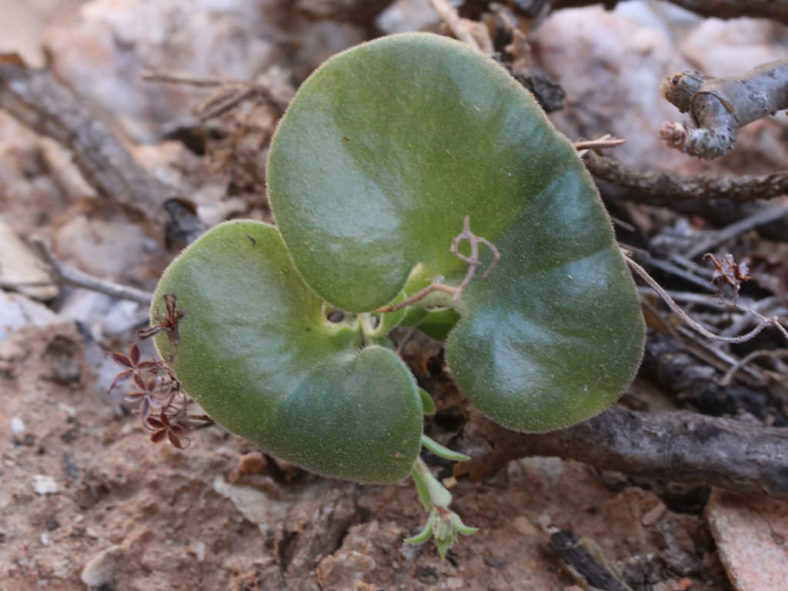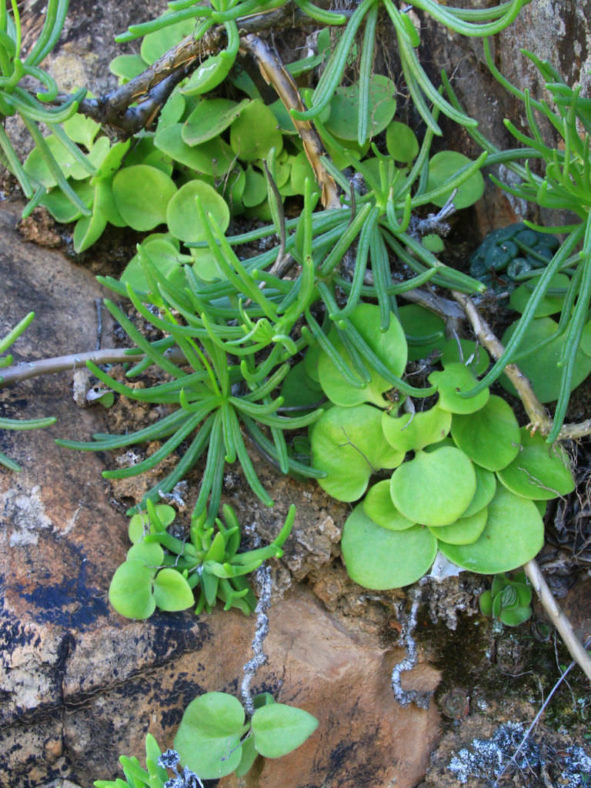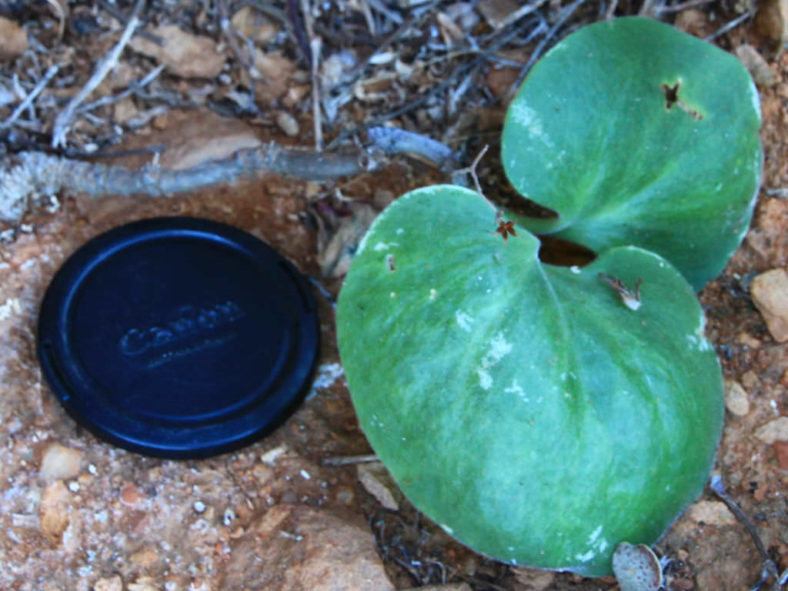Scientific Name
Tylecodon florentii van Jaarsv.
Scientific Classification
Family: Crassulaceae
Subfamily: Kalanchoideae
Genus: Tylecodon
Etymology
The specific epithet "florentii (FLOR-en-tee-eye)" honors Florent Grenier, who discovered the species in 2015, a French botanist, a specialist in the pollination ecology of Namaqualand xerophytes, and author of the book "Secrets of Namaqualand Succulents."
Origin
Tylecodon florentii is native to South Africa (restricted to the upper south-facing reddish sandstone cliffs of the Kookrivier, Northern Cape).
Description
Tylecodon florentii is a small succulent with thick branches that grow from a tuberous base. The caudex is subglobular with flaking greyish bark and can reach up to 1.6 inches (4 cm) in height and 2.2 inches (5.5 cm) in diameter. The branches are fleshy and densely covered in short greyish-brown phyllopodia. They can grow up to 10 inches (25 cm) long and up to 0.15 (0.4 cm) in diameter. The leaves are green to dull green and covered in short translucent glandular hairs. They are rounded or heart-shaped, measuring up to 1.6 inches (4 cm) long and 1 inch (2.5 cm) wide.
The flowers are tubular, white to light pink, and appear when the plant sheds its leaves in summer.

How to Grow and Care for Tylecodon florentii
Light: Tylecodons can survive direct sunlight exposure without problems, but they will grow beautifully in shadow.
Soil: A well-draining soil mix is a key to healthy T. florentii. Poor drainage and overwatering most commonly cause root rot in both indoor and outdoor plants.
Hardiness: These plants are highly tolerant when it comes to high temperatures and also tolerant of cold, frost-free conditions during the winter. T. florentii can withstand temperatures as low as 25 to 50 °F (-3.9 to 10 °C), USDA hardiness zones 9b to 11b.
Watering: T. florentii requires careful watering from winter until spring. Get the soil wet, and then wait until it is dry before watering again. In the summer, reduce watering to once per month.
Fertilizing: Use liquid fertilizer for cacti and other succulents in winter.
Repotting: You do not need to repot T. florentii often. However, you can do it when the container becomes too small or shallow.
Propagation: These succulents can be cultivated either by seed or by cuttings. Sow the seeds in fall and winter in a seedbox with a well-draining potting mix. The best time for taking cuttings is the fall.
Learn more at How to Grow and Care for Tylecodon.
Toxicity of Tylecodon florentii
Tylecodons are adapted to avoid animal predation being poisonous. Keep them away from children, pets, and livestock.
Links
- Back to genus Tylecodon
- Succupedia: Browse succulents by Scientific Name, Common Name, Genus, Family, USDA Hardiness Zone, Origin, or cacti by Genus
Photo Gallery
Click on a photo to see a larger version.


